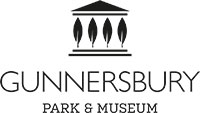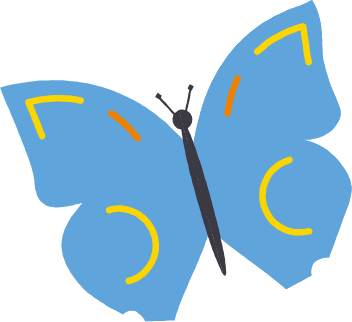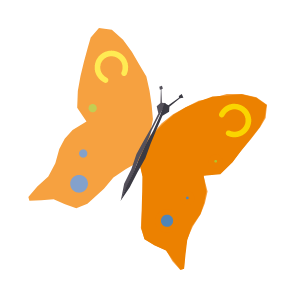Wildflower Meadows
Areas like the Wildflower Meadow at Gunnersbury Park provide an amazing habitat (or home) for all kinds of insects and small animals.
The meadow changes throughout the year, meaning that it will look, sound and smell differently every time you visit. Wildflower meadows are made up of lots of types of plants, each of which runs on a slightly different timetable during the year.
- In the spring, seeds will ping into life by germinating then starting to grow shoots and leaves.
- At the end of spring and then throughout the summer, plants will start to flower. This is when you’ll see the most insects buzzing and crawling from plant to plant, searching for food and pollen.
- Towards the end of the summer and in the autumn, the plants might not look as pretty but they’re still doing a hugely important job: producing new seeds, ready for the next year.
- After they’ve finished this (and all the invertebrate insects have gone to find new habitats for the winter), the meadow is ready for its one cut of the year.
- Fast forward a few months, and the seeds are ready to germinate. The whole cycle begins again.
Ready to put your wildflower meadow knowledge to the test? Take our quiz!
Nature and music
For hundreds of years, nature has inspired composers, singers and musicians. From pieces for orchestras with more than 80 musicians to songs performed by just one person, the sights and sounds at locations like the Wildflower Meadow have given all kinds of people ideas to create some amazing music.
Click on the names below to find out about two composers inspired by nature, then take our quiz to hear some music.
Find out about composer and musician Kizzy Crawford
Name: Kizzy Crawford
Job: Composer and musician
Born: 1996 in Merthyr Tydfil, Wales 🏴
Fun fact: Kizzy recommends colouring to help with nerves before performing.
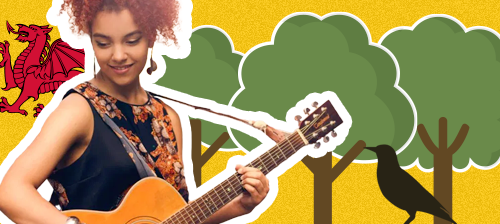
Kizzy is inspired by all kinds of music: Soul, indie, electronic, folk, jazz and classical, and draws on her Welsh, English and Barbadian heritage.
Her songs often feature both English and Welsh lyrics. Kizzy says, “There are things which I can only say and convey in Welsh, because the language says it better than English - and vice versa. For example, Welsh is very lyrical, and uses poetic language which enables me to express and explore feelings in a way which I don't feel so comfortable about in English.”
After starting to write her own songs aged 13, her first single was called Starling, partly inspired by a bird in her garden. Kizzy also created an album called Birdsong with a jazz pianist and classical musicians, based on the sights and sounds of an ancient woodland at Carngafallt in Wales.
Recorded sounds of birds singing are copied by instruments like the violin, flute and French horn, while Kizzy also sings about the colours of the forest.
Have a listen to some of Kizzy’s music:
Find out more about composer Ralph Vaughan Williams
Name: Ralph Vaughan Williams
Job: Composer
Born: 1872 in Glouestershire, England 🏴
Fun fact: Ralph pronounced his name ‘Rafe’, not ‘Ralf’.
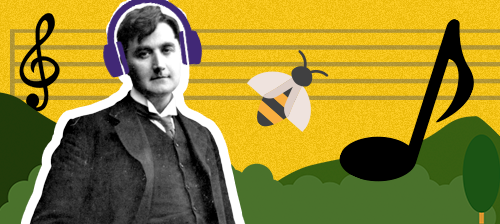
Ralph Vaughan Williams is one of Britain’s most famous composers. He wrote symphonies for huge orchestras, hymn tunes for choirs, concertos (pieces that put one particular instrument in the spotlight), and a lot more besides.
The composer grew up in countryside of Surrey and was often inspired by the sights and sounds of nature, like in The Lark Ascending. You’ll get to hear that in the quiz!
What do you think the string instruments of the orchestra (violins, violas, cellos and double basses) sound like at the beginning of this piece?
Ralph also loved folk music - the traditional tunes sung and played in villages across the land - and went round collecting as many examples as he could, scribbling them down in his notebook.
From the simplest of tunes he might have heard someone humming in the street, Ralph created music that orchestras still play a hundred years later. The piece below uses volume (or dynamics) to make the music even more powerful. It swaps between being quiet like a whisper to being a huge wave of sound.
Listen to the first few minutes of it to see if you can hear the difference.
Creative challenge
Make your own 30 second piece of music inspired by the sounds and sights of the Wildflower Meadow at Gunnersbury.
Grab your notebook from your visit and look at the notes you made while at the meadow. When creating your piece of music you might like to think about:
- Are you writing about a particular insect, animal or flower, or about the whole scene at Gunnersbury?
- Could it feature any rhythms (patterns of sounds) you heard?
- Should it have a main tune (or melody)?
- What speed (or tempo) should the music be played at?
- What instruments do you have available?
You may already have some instruments in your house to make your piece of music on, or you could make your own.
Some ideas of instruments to use are:
- Your voice - sing!
- Your body - (watch to see an example)
- Pots and pans - ask if there's anything in the kitchen you could borrow
- A whole range of DIY craft instruments - (click for some ideas to make at home)
We’d love to hear your creations. If you’d like to, you can share them with us on social media using #GunnersburyPark
Where next?
There are plenty of other activities waiting for you, both in the park and at home.
Back at Home
